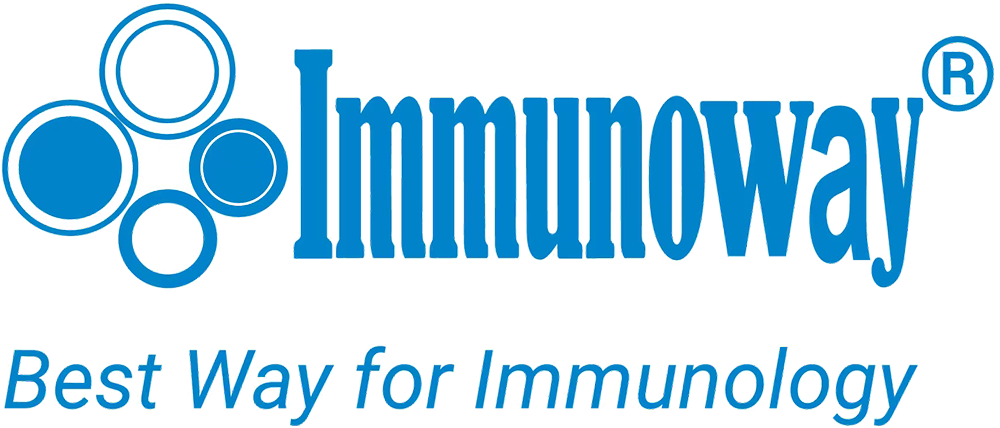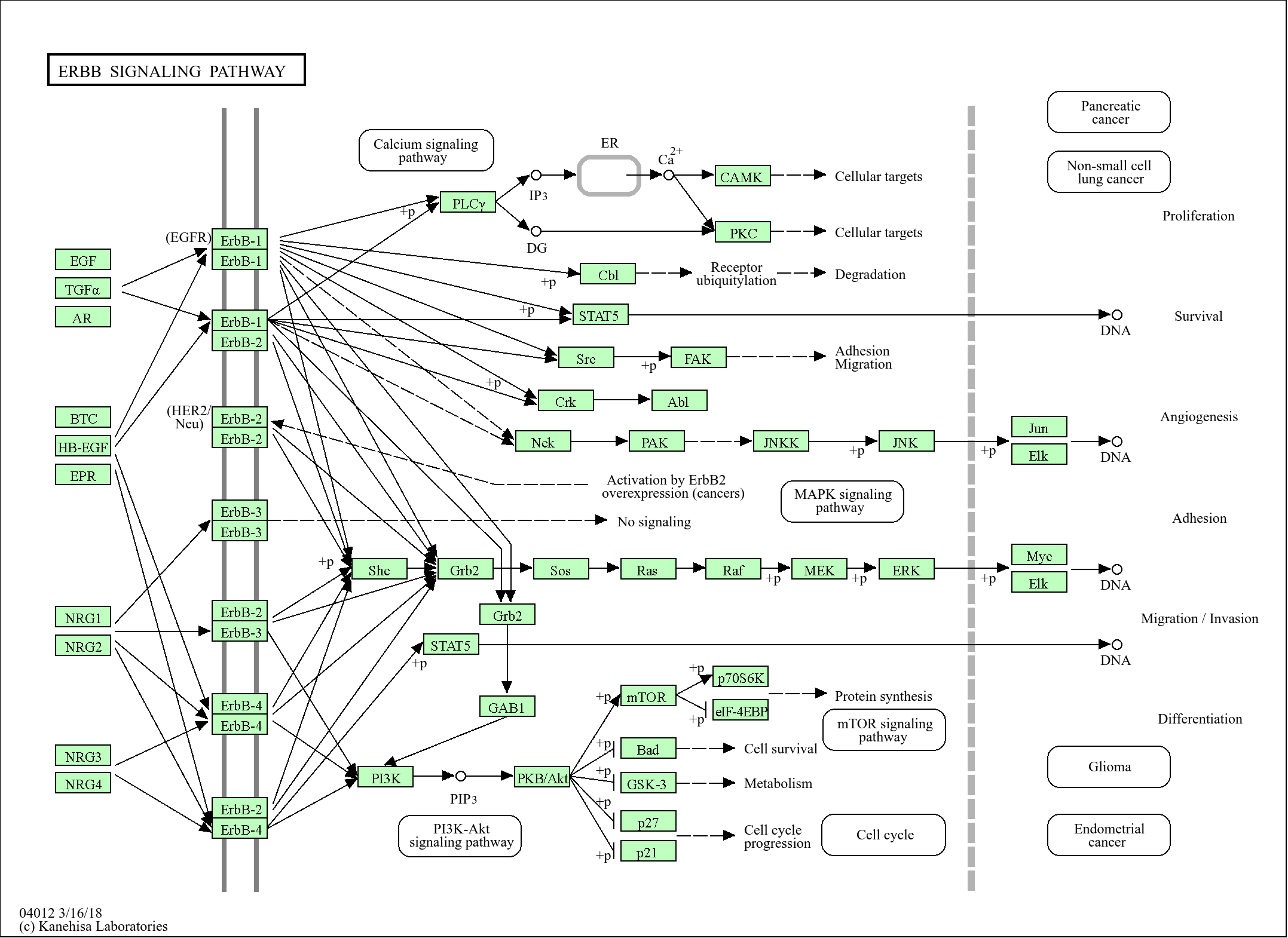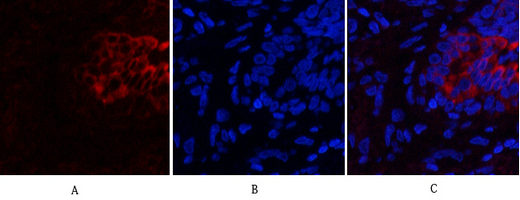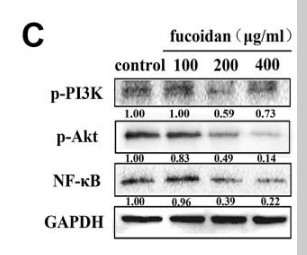
Catalog: YP0224
Size
Price
Status
Qty.
200μL
$600.00
In stock
0
100μL
$340.00
In stock
0
50μL
$190.00
In stock
0
Add to cart


Collected


Collect
Main Information
Target
PI3 kinase p85/p55
Host Species
Rabbit
Reactivity
Human, Mouse, Rat, Monkey, Pig
Applications
WB, IHC, IF, ELISA
MW
55kD,85kD (Observed)
Conjugate/Modification
Phospho
Detailed Information
Recommended Dilution Ratio
WB 1:500-1:2000; IHC 1:100-1:300; IF 1:200-1:1000; ELISA 1:10000; Not yet tested in other applications.
Formulation
Liquid in PBS containing 50% glycerol, 0.5% BSA and 0.02% sodium azide.
Specificity
This antibody detects endogenous levels of PI3 kinase p85/p55 only when phosphorylated at Human:Y467/Y199, Mouse:Y467/Y199, Rat:Y467/Y199..The name of modified sites may be influenced by many factors, such as species (the modified site was not originally found in human samples) and the change of protein sequence (the previous protein sequence is incomplete, and the protein sequence may be prolonged with the development of protein sequencing technology). When naming, we will use the "numbers" in historical reference to keep the sites consistent with the reports. The antibody binds to the following modification sequence (lowercase letters are modification sites):RLyEE
Purification
The antibody was affinity-purified from rabbit antiserum by affinity-chromatography using epitope-specific immunogen.
Storage
-15°C to -25°C/1 year(Do not lower than -25°C)
Concentration
1 mg/ml
MW(Observed)
55kD,85kD
Modification
Phospho
Clonality
Polyclonal
Isotype
IgG
RRID
AB_3096162
Related Products
Antigen&Target Information
Immunogen:
The antiserum was produced against synthesized peptide derived from human PI3-kinase p85-alpha/gamma around the phosphorylation site of Tyr467/199. AA range:436-485
show all
Specificity:
This antibody detects endogenous levels of PI3 kinase p85/p55 only when phosphorylated at Human:Y467/Y199, Mouse:Y467/Y199, Rat:Y467/Y199..The name of modified sites may be influenced by many factors, such as species (the modified site was not originally found in human samples) and the change of protein sequence (the previous protein sequence is incomplete, and the protein sequence may be prolonged with the development of protein sequencing technology). When naming, we will use the "numbers" in historical reference to keep the sites consistent with the reports. The antibody binds to the following modification sequence (lowercase letters are modification sites):RLyEE
show all
Gene Name:
PIK3R1/PIK3R3
show all
Protein Name:
Phosphatidylinositol 3-kinase regulatory subunit alpha/gamma
show all
Other Name:
PIK3R1 ;
GRB1 ;
Phosphatidylinositol 3-kinase regulatory subunit alpha ;
PI3-kinase regulatory subunit alpha ;
PI3K regulatory subunit alpha ;
PtdIns-3-kinase regulatory subunit alpha ;
Phosphatidylinositol 3-kinase 85 kDa regulatory subunit alpha ;
PI3-kinase subunit p85-alpha ;
PtdIns-3-kinase regulatory subunit p85-alpha
GRB1 ;
Phosphatidylinositol 3-kinase regulatory subunit alpha ;
PI3-kinase regulatory subunit alpha ;
PI3K regulatory subunit alpha ;
PtdIns-3-kinase regulatory subunit alpha ;
Phosphatidylinositol 3-kinase 85 kDa regulatory subunit alpha ;
PI3-kinase subunit p85-alpha ;
PtdIns-3-kinase regulatory subunit p85-alpha
show all
Database Link:
Background:
Phosphatidylinositol 3-kinase phosphorylates the inositol ring of phosphatidylinositol at the 3-prime position. The enzyme comprises a 110 kD catalytic subunit and a regulatory subunit of either 85, 55, or 50 kD. This gene encodes the 85 kD regulatory subunit. Phosphatidylinositol 3-kinase plays an important role in the metabolic actions of insulin, and a mutation in this gene has been associated with insulin resistance. Alternative splicing of this gene results in four transcript variants encoding different isoforms. [provided by RefSeq, Jun 2011],
show all
Function:
Disease:Defects in PIK3R1 are a cause of severe insulin resistance.,Domain:The SH3 domain mediates the binding to CBLB, and to HIV-1 Nef.,Function:Binds to activated (phosphorylated) protein-Tyr kinases, through its SH2 domain, and acts as an adapter, mediating the association of the p110 catalytic unit to the plasma membrane. Necessary for the insulin-stimulated increase in glucose uptake and glycogen synthesis in insulin-sensitive tissues.,PTM:Polyubiquitinated in T-cells by CBLB; which does not promote proteasomal degradation but impairs association with CD28 and CD3Z upon T-cell activation.,similarity:Belongs to the PI3K p85 subunit family.,similarity:Contains 1 Rho-GAP domain.,similarity:Contains 1 SH3 domain.,similarity:Contains 2 SH2 domains.,subunit:Heterodimer of a p110 (catalytic) and a p85 (regulatory) subunits. Interacts with phosphorylated TOM1L1. Interacts with phosphorylated LIME1 upon TCR and/or BCR activation. Interacts with SOCS7. Interacts with RUFY3 (By similarity). Interacts with phosphorylated LAT, LAX1 and TRAT1 upon TCR activation. Interacts with CBLB. Interacts with HIV-1 Nef to activate the Nef associated p21-activated kinase (PAK). This interaction depends on the C-terminus of both proteins and leads to increased production of HIV. Interacts with HCV NS5A. The SH2 domains interact with the YTHM motif of phosphorylated INSR in vitro. Also interacts with tyrosine-phosphorylated IGF1R in vitro. Interacts with CD28 and CD3Z upon T-cell activation. Interacts with IRS1 and phosphorylated IRS4, as well as with NISCH and HCST.,tissue specificity:Isoform 2 is expressed in skeletal muscle and brain, and at lower levels in kidney and cardiac muscle. Isoform 2 and isoform 4 are present in skeletal muscle (at protein level).,
show all
Cellular Localization:
nucleus,cytoplasm,cis-Golgi network,cytosol,plasma membrane,cell-cell junction,phosphatidylinositol 3-kinase complex,phosphatidylinositol 3-kinase complex, class IA,membrane,perinuclear endoplasmic reticulum membrane,
show all
Tissue Expression:
Research Areas:
>>EGFR tyrosine kinase inhibitor resistance ;
>>Endocrine resistance ;
>>Platinum drug resistance ;
>>ErbB signaling pathway ;
>>Ras signaling pathway ;
>>Rap1 signaling pathway ;
>>cAMP signaling pathway ;
>>Chemokine signaling pathway ;
>>HIF-1 signaling pathway ;
>>FoxO signaling pathway ;
>>Phosphatidylinositol signaling system ;
>>Sphingolipid signaling pathway ;
>>Phospholipase D signaling pathway ;
>>Autophagy - animal ;
>>mTOR signaling pathway ;
>>PI3K-Akt signaling pathway ;
>>AMPK signaling pathway ;
>>Apoptosis ;
>>Longevity regulating pathway ;
>>Longevity regulating pathway - multiple species ;
>>Cellular senescence ;
>>Axon guidance ;
>>VEGF signaling pathway ;
>>Osteoclast differentiation ;
>>Focal adhesion ;
>>Signaling pathways regulating pluripotency of stem cells ;
>>Platelet activation ;
>>Neutrophil extracellular trap formation ;
>>Toll-like receptor signaling pathway ;
>>C-type lectin receptor signaling pathway ;
>>JAK-STAT signaling pathway ;
>>Natural killer cell mediated cytotoxicity ;
>>T cell receptor signaling pathway ;
>>B cell receptor signaling pathway ;
>>Fc epsilon RI signaling pathway ;
>>Fc gamma R-mediated phagocytosis ;
>>TNF signaling pathway ;
>>Leukocyte transendothelial migration ;
>>Neurotrophin signaling pathway ;
>>Cholinergic synapse ;
>>Inflammatory mediator regulation of TRP channels ;
>>Regulation of actin cytoskeleton ;
>>Insulin signaling pathway ;
>>Progesterone-mediated oocyte maturation ;
>>Estrogen signaling pathway ;
>>Prolactin signaling pathway ;
>>Thyroid hormone signaling pathway ;
>>Regulation of lipolysis in adipocytes ;
>>Relaxin signaling pathway ;
>>GnRH secretion ;
>>Type II diabetes mellitus ;
>>Insulin resistance ;
>>Non-alcoholic fatty liver disease ;
>>AGE-RAGE signaling pathway in diabetic complications ;
>>Growth hormone synthesis, secretion and action ;
>>Aldosterone-regulated sodium reabsorption ;
>>Carbohydrate digestion and absorption ;
>>Alzheimer disease ;
>>Spinocerebellar ataxia ;
>>Prion disease ;
>>Bacterial invasion of epithelial cells ;
>>Shigellosis ;
>>Yersinia infection ;
>>Chagas disease ;
>>Amoebiasis ;
>>Hepatitis C ;
>>Hepatitis B ;
>>Measles ;
>>Human cytomegalovirus infection ;
>>Influenza A ;
>>Human papillomavirus infection ;
>>Human T-cell leukemia virus 1 infection ;
>>Kaposi sarcoma-associated herpesvirus infection ;
>>Herpes simplex virus 1 infection ;
>>Epstein-Barr virus infection ;
>>Human immunodeficiency virus 1 infection ;
>>Coronavirus disease - COVID-19 ;
>>Pathways in cancer ;
>>Viral carcinogenesis ;
>>Proteoglycans in cancer ;
>>MicroRNAs in cancer ;
>>Chemical carcinogenesis - receptor activation ;
>>Chemical carcinogenesis - reactive oxygen species ;
>>Colorectal cancer ;
>>Renal cell carcinoma ;
>>Pancreatic cancer ;
>>Endometrial cancer ;
>>Glioma ;
>>Prostate cancer ;
>>Melanoma ;
>>Chronic myeloid leukemia ;
>>Acute myeloid leukemia ;
>>Small cell lung cancer ;
>>Non-small cell lung cancer ;
>>Breast cancer ;
>>Hepatocellular carcinoma ;
>>Gastric cancer ;
>>Central carbon metabolism in cancer ;
>>Choline metabolism in cancer ;
>>PD-L1 expression and PD-1 checkpoint pathway in cancer ;
>>Diabetic cardiomyopathy ;
>>Lipid and atherosclerosis ;
>>Fluid shear stress and atherosclerosis
>>Endocrine resistance ;
>>Platinum drug resistance ;
>>ErbB signaling pathway ;
>>Ras signaling pathway ;
>>Rap1 signaling pathway ;
>>cAMP signaling pathway ;
>>Chemokine signaling pathway ;
>>HIF-1 signaling pathway ;
>>FoxO signaling pathway ;
>>Phosphatidylinositol signaling system ;
>>Sphingolipid signaling pathway ;
>>Phospholipase D signaling pathway ;
>>Autophagy - animal ;
>>mTOR signaling pathway ;
>>PI3K-Akt signaling pathway ;
>>AMPK signaling pathway ;
>>Apoptosis ;
>>Longevity regulating pathway ;
>>Longevity regulating pathway - multiple species ;
>>Cellular senescence ;
>>Axon guidance ;
>>VEGF signaling pathway ;
>>Osteoclast differentiation ;
>>Focal adhesion ;
>>Signaling pathways regulating pluripotency of stem cells ;
>>Platelet activation ;
>>Neutrophil extracellular trap formation ;
>>Toll-like receptor signaling pathway ;
>>C-type lectin receptor signaling pathway ;
>>JAK-STAT signaling pathway ;
>>Natural killer cell mediated cytotoxicity ;
>>T cell receptor signaling pathway ;
>>B cell receptor signaling pathway ;
>>Fc epsilon RI signaling pathway ;
>>Fc gamma R-mediated phagocytosis ;
>>TNF signaling pathway ;
>>Leukocyte transendothelial migration ;
>>Neurotrophin signaling pathway ;
>>Cholinergic synapse ;
>>Inflammatory mediator regulation of TRP channels ;
>>Regulation of actin cytoskeleton ;
>>Insulin signaling pathway ;
>>Progesterone-mediated oocyte maturation ;
>>Estrogen signaling pathway ;
>>Prolactin signaling pathway ;
>>Thyroid hormone signaling pathway ;
>>Regulation of lipolysis in adipocytes ;
>>Relaxin signaling pathway ;
>>GnRH secretion ;
>>Type II diabetes mellitus ;
>>Insulin resistance ;
>>Non-alcoholic fatty liver disease ;
>>AGE-RAGE signaling pathway in diabetic complications ;
>>Growth hormone synthesis, secretion and action ;
>>Aldosterone-regulated sodium reabsorption ;
>>Carbohydrate digestion and absorption ;
>>Alzheimer disease ;
>>Spinocerebellar ataxia ;
>>Prion disease ;
>>Bacterial invasion of epithelial cells ;
>>Shigellosis ;
>>Yersinia infection ;
>>Chagas disease ;
>>Amoebiasis ;
>>Hepatitis C ;
>>Hepatitis B ;
>>Measles ;
>>Human cytomegalovirus infection ;
>>Influenza A ;
>>Human papillomavirus infection ;
>>Human T-cell leukemia virus 1 infection ;
>>Kaposi sarcoma-associated herpesvirus infection ;
>>Herpes simplex virus 1 infection ;
>>Epstein-Barr virus infection ;
>>Human immunodeficiency virus 1 infection ;
>>Coronavirus disease - COVID-19 ;
>>Pathways in cancer ;
>>Viral carcinogenesis ;
>>Proteoglycans in cancer ;
>>MicroRNAs in cancer ;
>>Chemical carcinogenesis - receptor activation ;
>>Chemical carcinogenesis - reactive oxygen species ;
>>Colorectal cancer ;
>>Renal cell carcinoma ;
>>Pancreatic cancer ;
>>Endometrial cancer ;
>>Glioma ;
>>Prostate cancer ;
>>Melanoma ;
>>Chronic myeloid leukemia ;
>>Acute myeloid leukemia ;
>>Small cell lung cancer ;
>>Non-small cell lung cancer ;
>>Breast cancer ;
>>Hepatocellular carcinoma ;
>>Gastric cancer ;
>>Central carbon metabolism in cancer ;
>>Choline metabolism in cancer ;
>>PD-L1 expression and PD-1 checkpoint pathway in cancer ;
>>Diabetic cardiomyopathy ;
>>Lipid and atherosclerosis ;
>>Fluid shear stress and atherosclerosis
show all
Signaling Pathway
Cellular Processes >> Transport and catabolism >> Autophagy - animal
Cellular Processes >> Cell growth and death >> Apoptosis
Cellular Processes >> Cell growth and death >> Cellular senescence
Cellular Processes >> Cellular community - eukaryotes >> Focal adhesion
Cellular Processes >> Cellular community - eukaryotes >> Signaling pathways regulating pluripotency of stem cells
Cellular Processes >> Cell motility >> Regulation of actin cytoskeleton
Organismal Systems >> Immune system >> Platelet activation
Organismal Systems >> Immune system >> Neutrophil extracellular trap formation
Organismal Systems >> Immune system >> Toll-like receptor signaling pathway
Organismal Systems >> Immune system >> Natural killer cell mediated cytotoxicity
Organismal Systems >> Immune system >> T cell receptor signaling pathway
Organismal Systems >> Immune system >> B cell receptor signaling pathway
Organismal Systems >> Immune system >> Fc epsilon RI signaling pathway
Organismal Systems >> Immune system >> Fc gamma R-mediated phagocytosis
Organismal Systems >> Immune system >> Leukocyte transendothelial migration
Organismal Systems >> Immune system >> Chemokine signaling pathway
Organismal Systems >> Endocrine system >> Insulin signaling pathway
Organismal Systems >> Endocrine system >> Estrogen signaling pathway
Organismal Systems >> Endocrine system >> Prolactin signaling pathway
Organismal Systems >> Endocrine system >> Relaxin signaling pathway
Organismal Systems >> Endocrine system >> Growth hormone synthesis, secretion and action
Organismal Systems >> Endocrine system >> Thyroid hormone signaling pathway
Organismal Systems >> Nervous system >> Cholinergic synapse
Organismal Systems >> Nervous system >> Neurotrophin signaling pathway
Organismal Systems >> Sensory system >> Inflammatory mediator regulation of TRP channels
Organismal Systems >> Development and regeneration >> Osteoclast differentiation
Organismal Systems >> Aging >> Longevity regulating pathway
Organismal Systems >> Aging >> Longevity regulating pathway - multiple species
Human Diseases >> Cancer: overview >> Pathways in cancer
Human Diseases >> Cancer: overview >> MicroRNAs in cancer
Human Diseases >> Cancer: overview >> Central carbon metabolism in cancer
Human Diseases >> Cancer: overview >> PD-L1 expression and PD-1 checkpoint pathway in cancer
Human Diseases >> Cancer: specific types >> Colorectal cancer
Human Diseases >> Cancer: specific types >> Pancreatic cancer
Human Diseases >> Cancer: specific types >> Hepatocellular carcinoma
Human Diseases >> Cancer: specific types >> Gastric cancer
Human Diseases >> Cancer: specific types >> Glioma
Human Diseases >> Cancer: specific types >> Acute myeloid leukemia
Human Diseases >> Cancer: specific types >> Chronic myeloid leukemia
Human Diseases >> Cancer: specific types >> Melanoma
Human Diseases >> Cancer: specific types >> Renal cell carcinoma
Human Diseases >> Cancer: specific types >> Prostate cancer
Human Diseases >> Cancer: specific types >> Endometrial cancer
Human Diseases >> Cancer: specific types >> Breast cancer
Human Diseases >> Cancer: specific types >> Small cell lung cancer
Human Diseases >> Cancer: specific types >> Non-small cell lung cancer
Human Diseases >> Neurodegenerative disease >> Alzheimer disease
Human Diseases >> Neurodegenerative disease >> Spinocerebellar ataxia
Human Diseases >> Neurodegenerative disease >> Prion disease
Environmental Information Processing >> Signal transduction >> ErbB signaling pathway
Environmental Information Processing >> Signal transduction >> Ras signaling pathway
Environmental Information Processing >> Signal transduction >> Rap1 signaling pathway
Environmental Information Processing >> Signal transduction >> VEGF signaling pathway
Environmental Information Processing >> Signal transduction >> JAK-STAT signaling pathway
Environmental Information Processing >> Signal transduction >> TNF signaling pathway
Environmental Information Processing >> Signal transduction >> HIF-1 signaling pathway
Environmental Information Processing >> Signal transduction >> FoxO signaling pathway
Environmental Information Processing >> Signal transduction >> Phospholipase D signaling pathway
Environmental Information Processing >> Signal transduction >> Sphingolipid signaling pathway
Environmental Information Processing >> Signal transduction >> cAMP signaling pathway
Environmental Information Processing >> Signal transduction >> PI3K-Akt signaling pathway
Environmental Information Processing >> Signal transduction >> AMPK signaling pathway
Environmental Information Processing >> Signal transduction >> mTOR signaling pathway
Reference Citation({{totalcount}})
Catalog: YP0224
Size
Price
Status
Qty.
200μL
$600.00
In stock
0
100μL
$340.00
In stock
0
50μL
$190.00
In stock
0
Add to cart


Collected


Collect
Recently Viewed Products
Clear allPRODUCTS
CUSTOMIZED
ABOUT US
Toggle night Mode
{{pinfoXq.title || ''}}
Catalog: {{pinfoXq.catalog || ''}}
Filter:
All
{{item.name}}
{{pinfo.title}}
-{{pinfo.catalog}}
Main Information
Target
{{pinfo.target}}
Reactivity
{{pinfo.react}}
Applications
{{pinfo.applicat}}
Conjugate/Modification
{{pinfo.coupling}}/{{pinfo.modific}}
MW (kDa)
{{pinfo.mwcalc}}
Host Species
{{pinfo.hostspec}}
Isotype
{{pinfo.isotype}}
Product {{index}}/{{pcount}}
Prev
Next
{{pvTitle}}
Scroll wheel zooms the picture
{{pvDescr}}




















